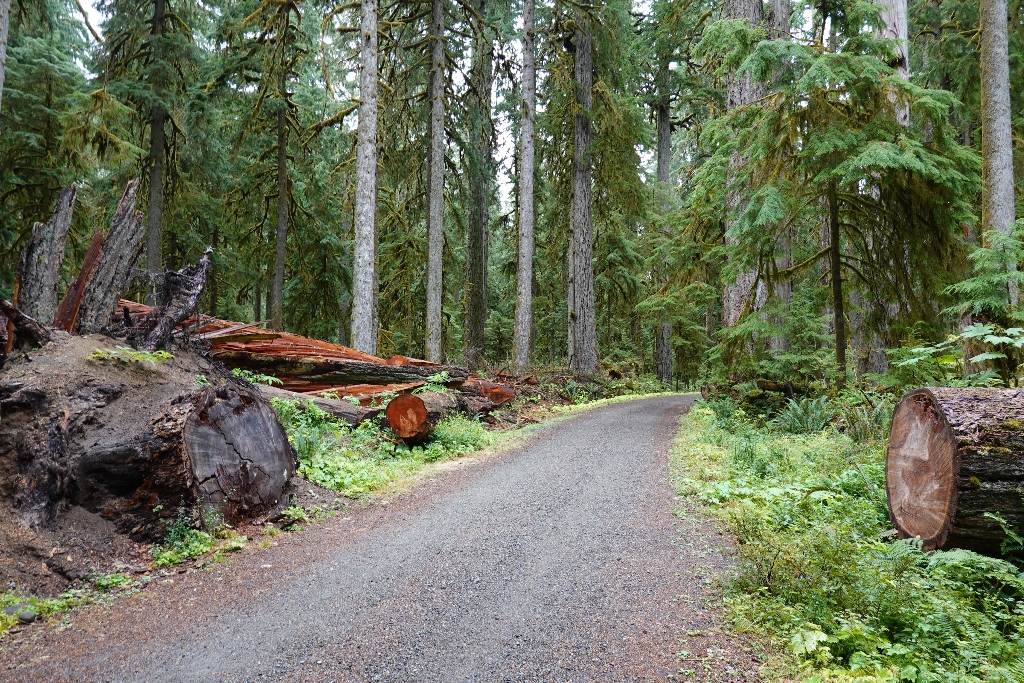
Only the tallest of the trees - Sitka spruce, Douglas-fir, and Western red cedar - are able to burst free of the dense green confines of the rainforest canopy and bask in the sunlight. But emerging from the protection of the canopy can be risky. These tall trees are battered by winds and storms, which sometimes knock them to the ground. At this stop, the Carbon River Trail cuts through an old growth Douglas-fir tree (its uprooted stump is on the left side of the trail with the main trunk on the right side of the trail) and the remains of a large Western red cedar (Thuja plicata) that fell along the left side of the trail just past the fallen Douglas-fir tree.
Notice the bright red color of the Western red cedar wood and its distinctive scent. Due to oils in the wood, Western red cedar is naturally resistant to water, rot, and insect decay. Cedar has been used by native people for generations and continues to be used for traditional purposes today. The wood is easy to carve to create canoes or tools and can be split to form cedar shakes and boards. The bark is collected and used as a fiber in making baskets and clothing. At Mount Rainier National Park, many of the park buildings use cedar shakes for roofing materials, and many trail bridges are built out of cedar boards.
NOTE: It is illegal to collect or remove any cedar wood from the park.
Is there something we missed for this itinerary?
Itineraries across USA


















































